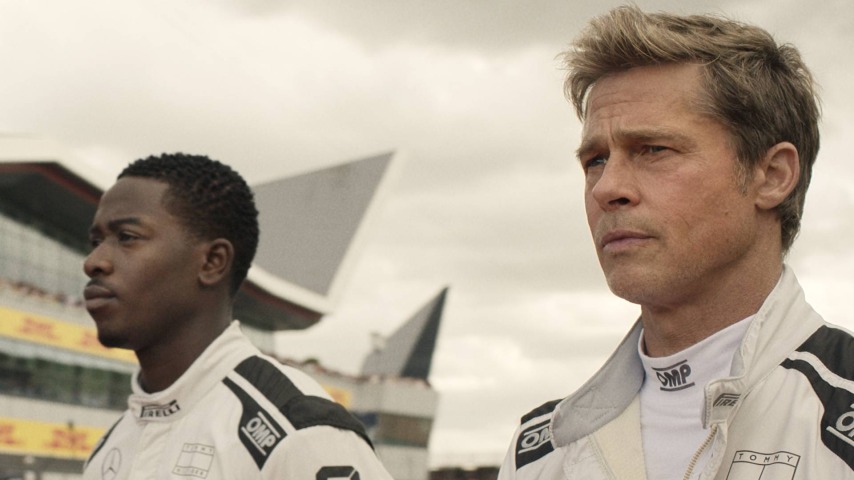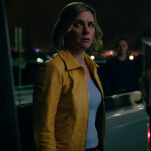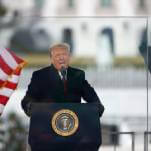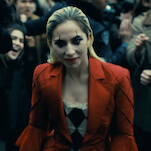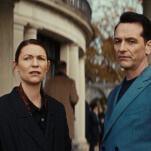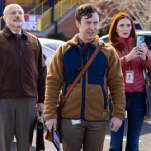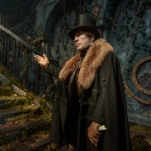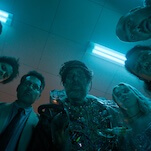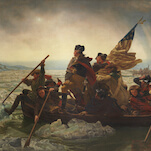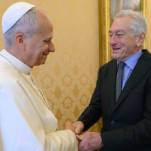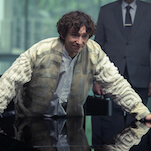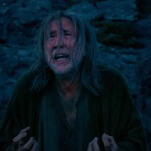F1 The Movie is the next step in this broader marketing push. Like its forebears in racing cinema, it started with Hollywood approaching F1, although unlike the reluctance from the Drivers Association to participate in Grand Prix or Driven, F1 The Movie was met with such open arms that it seems to be an official extension of the sport. This is not because of a particular realism in storytelling, although it touts that in its technical side, but because the film works to boost the prestigious, yuppieish appeal of Formula 1 as an intellectual property.
Anyone with a passing familiarity with the sport will find a lot strange about F1 The Movie‘s plot. Its story is an amalgamation, both of recent racing history (even casual fans will immediately recognize references to Bahrain 2020 and Abu Dhabi 2021) as well as older events (there is a recreation of Martin Donnelly’s 1990 crash for character backstory). While F1 The Movie might work as a broad introductory text, its consolidation of racing incidents ends up leaving a baffling picture of what the sport is. For instance, Sonny Hayes (Brad Pitt) has a penchant for intentionally crashing into rivals to cause safety cars, which neutralize the race, bunch up the pack of cars, and in effect make people’s pit stop times shorter. There is precedent for this kind of cheating: In the 2008 Singapore Grand Prix, Nelson Piquet Jr. intentionally hit his Renault into the wall on the main straight in order to cause a safety car, which allowed his teammate Fernando Alonso to get a cheap pit stop and ultimately win the race. “Crashgate,” as it is known, is one of the most controversial moments in modern F1 history, one still litigated (literally, in court) to this day. Sonny Hayes commits a Crashgate every single race.
The accuracy of the film could be endlessly nitpicked and critiqued (as many racing fans like to do, regardless), like how Hayes seems much too old to return to the sport. Having raced in 1993, he can’t be younger than in his 50s, and in an age when F1’s grid has been so locked off, there would likely be younger talent in feeder series or even less-old old drivers in other world-class competitions that could sub into his character’s role. Pitt’s age does open an opportunity to say that he raced against greats like Michael Schumacher, Alain Prost, and Ayrton Senna. The problem, though, is that those drivers changed the sport and effectively put renegade drivers like Hayes out of business. Senna and Prost’s rivalry wasn’t so much the playboy vs. the professor like James Hunt and Niki Lauda (fictionalized in Rush), but was one ultra-methodical, “does nothing except live and breath racing” driver versus one who is also that, but even more. Schumacher and his seven World Drivers’ Championship titles would be the nail in the coffin for F1 drivers looking to be anything less than completely dedicated athletes. All three drivers had their outbursts and fits of immaturity, sure, but they represented a shift from anything genuinely roguish in the sport to one where the name of the game is absurd precision.
This can be justified in that the film works in part as a star vehicle for Pitt. However, this falls into the same pitfall as filmmaker Joseph Kosinski’s Top Gun: Maverick, another vehicularly fetishistic blockbuster where an opportunity to hand off star power to a new generation is denied, instead banking on the nostalgia of the former glory of the old headliner. F1 The Movie is the vanity of Pitt’s shirtless scene in Once Upon A Time…In Hollywood stretched out for 156 minutes. It is playing into a similar “they really did it!” stunt spectacle as the latest Tom Cruise works, too, with Pitt and Damson Idris often themselves piloting the cars we see on track. Like sticking actors in real jets to film Maverick, it’s an unnecessary gimmick. Does this actually translate to a more thrilling film, when someone’s face is obscured almost entirely by a helmet? It just boils down what makes good marketing, like talking about how G-forces can’t be replicated without actually throwing the actors around at hundreds of miles an hour.
The one thing F1 The Movie does adopt from reality is the commentators, employing F1’s top voices David “Crofty” Croft and Martin Brundle to do their actual job for the film. But what the commentators do when you watch a broadcast is supplement—help you make quick sense of the chaos you are seeing in front of you, and what to keep an eye on when it seemingly gets boring. What Crofty and Brundle do in F1 The Movie is give sense where there is none, add narrative where sense can’t be found, and stitch together loose threads unraveling at 200 mph so that the filmmakers don’t have to make it all cohere. They are used as a shortcut rather than a tool of elevation. Listen to the way Leigh Diffey calls the last lap of the Cup Series road race at Watkins Glen last year: The camera replicates a crane down and then chases alongside the two leaders in heated battle, with Diffey laying out the stakes of the story before reaching a fever pitch on the pass. It would be incredible to see without a word spoken over it, and yet the commentary brings it to transcendence. In F1 The Movie, the commentary is merely the duct tape holding the thing together.
F1 The Movie tries to sell itself on this faux-realism, and on images never before seen, or never before possible, since no one before has ever miniaturized digital IMAX cameras and strapped them to an F2-spec car done up to look and feel like one from F1. RACER (a magazine briefly featured in the film), focuses its summer issue cover story on this technical achievement. But the images Kosinski comes up with aren’t new—his final “wow” moment, flying around on the track while the camera is fixed to the front end of a car, is the same gimmick that Frankenheimer used to stun audiences back in 1966 at the very beginning of Grand Prix. F1 The Movie is not iterative, but reiterative, both with its reuse of images better seen before and its quintessential story of old dog vs. young gun. It’s nothing new as a movie, but simply the newest piece of F1 content.
So who is F1 The Movie for? It might be best to look at the executive producers. Among the usual Hollywood suits are the likes of Lewis Hamilton, Mercedes team boss-owner Toto Wolff, and the CEO of F1 Stefano Domenicali. The trio make cameos after the denouement, affirming all that’s unfolded before, their branding exercise now complete. Like how F1 teams no longer need to be winning races, or even scoring many points, to be gold mines for investors, F1 The Movie doesn’t need to be a particularly good film, or even successful at the box office, as the mere existence of the film and its advertising is enough to solidify the brand that F1 wishes to proliferate.
It fits well Martin Scorsese’s idea of “theme park cinema,” a cinema driven by its consumption rather than its images, not just because the film tries to feel at times like a rollercoaster, but because the point isn’t really to watch F1 The Movie. It’s to buy into the brand of F1 the sport. As much as F1 The Movie is for those people that are on the fence about F1—herding the final crop of people who can potentially be sold hats and water bottles, who haven’t yet spent hours binging a Netflix show (but can somehow be convinced to see a two-and-a-half-hour movie)—it is also for the stakeholders. It’s a film for the team owners, the FIA board members, the track promoters, the merch resellers, or anyone, not just the executives at Apple and Warner Bros., financially invested in a sport that has turned itself into an IP.
